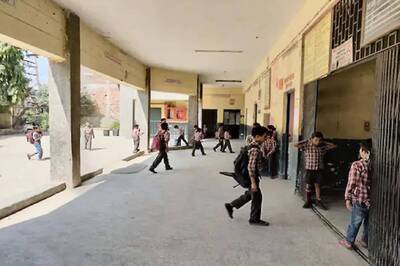
views
Cape Canaveral (Florida): Rain and low clouds prevented Atlantis from returning to Florida as scheduled, but mission managers were hopeful the space shuttle would be able to touch down on Friday, even if it meant landing in California.
During Atlantis' two chances to land on Thursday, showers were within 34 miles (55 kilometers) of the landing strip at Kennedy Space Center, and clouds hung below an altitude of 8,000 feet (2,400 meters), both violations of flight rules.
“We looked as hard and long as we think is reasonable and the rain showers and (cloud) ceilings are going to keep us from making it into Florida today,” Mission Control told Atlantis' seven astronauts.
Mission managers on Friday will activate the shuttle's backup landing site at Edwards Air Force Base in California. There will be three chances for the shuttle to land at Edwards on Friday, although winds were expected to be too strong for the last two.
The shuttle has five chances on Friday to land in either Florida or California, the first at 1418 hours EDT (1818 GMT) in Florida and the last at 1859 hours EDT (2259 GMT) in California. If the weather spoils all those opportunities, mission managers would activate another backup landing site in New Mexico and try for Saturday.
Atlantis has enough power for its systems to orbit until Sunday, but managers want the shuttle to land by Saturday. The flight would be extended to Sunday only if there were technical problems that needed to be fixed.
NASA managers prefer landing at Kennedy, which would make it easier and cheaper to prepare Atlantis for its next mission in December. It would cost $1.7 million and take up to 10 days to bring the shuttle back to Florida from California aboard a jumbo jet.
During the crew's 14-day mission to the international space station, the astronauts installed a new truss segment, unfurled a new pair of power-generating solar arrays and activated a rotating joint that allows the new solar arrays to track the sun.
Originally scheduled for 11 days, the mission was extended by two days to give astronauts time to repair a thermal blanket that had peeled up during the June 8 launch. Astronaut Danny Olivas stapled it back into place during a spacewalk last week. An extra day in orbit was added after the weather in Florida prevented a landing on Thursday.
The shuttle's visit to the space station was complicated by the crash of Russian computers that control orientation and oxygen production.
Atlantis helped the station maintain its orientation until the computers were revived several days later when cosmonauts Fyodor Yurchikhin and Oleg Kotov used a cable to bypass a circuit board. Astronauts also conserved the shuttle's power in case they needed to spend an extra day at the station.
The cosmonauts at the space station on Thursday attempted to power the Russian computers without using the cable bypass, but it was unsuccessful.




















Comments
0 comment